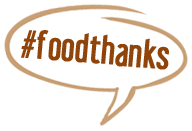Londa (Vanderwal) Nwadike, UVM Extension Food Safety Specialist, works with food processors throughout Vermont to improve the safety of their products, particularly meats and other small- scale processed food products. She also provides general support to strengthen the safety of other foods produced and processed in Vermont. She is working with the VT Department of Health and the Agency of Agriculture to coordinate a VT Food Safety Task Force.
She grew up on a diversified family farm in eastern South Dakota, and has experience working in food safety in food processing plants and in various aspects of ag research in the US throughout her BS and graduate degrees. She worked in food safety for the Food and Agriculture Organization of the United Nations (FAO), based in Rome, Italy for 5 years, and also has extensive experience living and working in Africa.
Yes, I am a proud new mother! My husband and I were blessed with our first baby in January 2012. As many of you other parents, aunts, uncles, and friends of new babies can relate to, I now think of many things through the lens of its impact on our precious baby.
It was through this lens that I thought about many of the presentations that were given at the 3rd Annual Food Systems Symposium held at UVM on October 31, 2012. This event was a great opportunity to hear more about various ongoing food systems-related projects and initiatives happening in Vermont and in the region. It also provided me with new ideas for collaborations, as well as some new challenges.
In particular, a presentation by Dr. Tyler Doggett of the UVM Philosophy Department really got me thinking about how my daughter influences my views of food, food access, food safety, nutrition, and related issues. He challenged us to think about the bigger picture of the ethics of feeding our communities and feeding the world by using the example of saving a drowning baby near us or saving a drowning baby in an African country.
I thought of my baby and all the other babies that I saw when I was living and working in Africa in food safety for the Food and Agriculture Organization of the United Nations, as well as working with a local NGO and teaching public health at a University. I also thought of the beautiful nieces of my husband (who is from Nigeria) and the children of all my other African friends and at what cost I would try to save them. My first impulse was that I wanted to jump into a plane immediately to fly to wherever there was a baby that I could save from drowning! Then I remembered that might not be the most efficient use of resources and started thinking about some larger food systems questions and how I can contribute.
When my daughter grows up, will there be enough food to feed her, as well as my nieces and friends living in Africa and in many other countries in the world in the future? Will that food be affordable, safe, and nutritious? If my daughter or nieces choose to do so, will they be able to play an important role in the food system in the future- will they have access to a good education in the food system? If they want to be a small scale food producer or processor, will they be able to survive economically? Is the food that my daughter eats today safe, nutritious, and produced in a sustainable and just manner? What can I be doing today to help contribute to strengthening the food system for my daughter, my nieces, and so many other children around the world?
Another thing I gleaned from Dr. Doggett’s presentation is that it is important to ask good questions. Many of us may have these same questions and I think it is very important that we continue to work together to also develop some good answers. One of the ways I am trying to help people work together today in my field of food safety is through our Vermont Food Safety Task Force where food safety stakeholders are coming together to improve the safety of our food from farm to plate. Anyone interested is welcome to join us in coming up with the right questions- and hopefully some answers- in the area of food safety.













